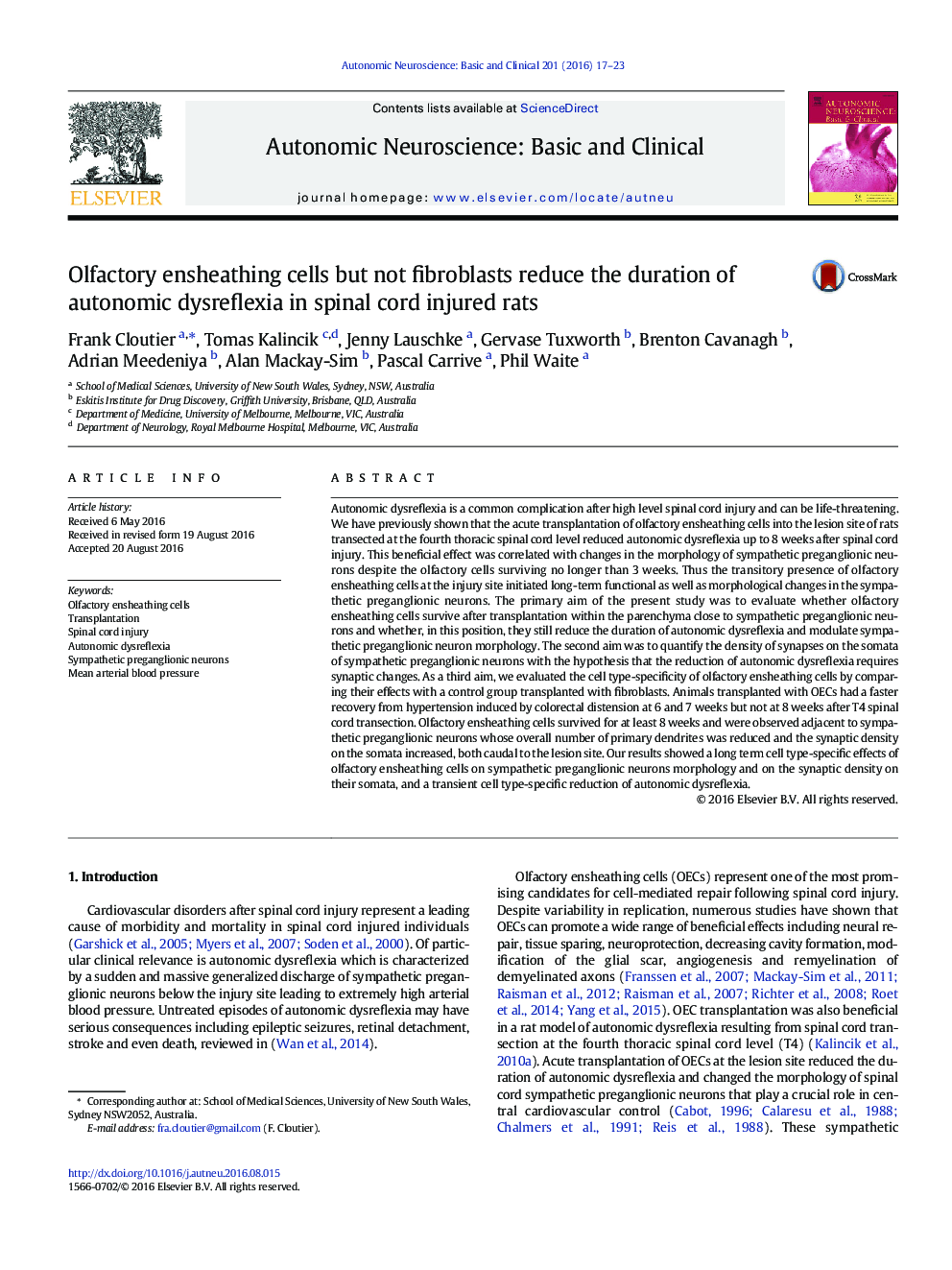| Article ID | Journal | Published Year | Pages | File Type |
|---|---|---|---|---|
| 5625988 | Autonomic Neuroscience | 2016 | 7 Pages |
â¢OECs transplanted close to sympathetic preganglionic neurons survived 8 weeks.â¢OECs reduced autonomic dysreflexia 6 and 7 weeks but not at 8 weeks.â¢OECs changed the morphology of sympathetic preganglionic neurons.â¢OECs changed synaptic inputs onto sympathetic preganglionic neurons somata.â¢Comparison with fibroblasts demonstrated that these effects are cell-specific.
Autonomic dysreflexia is a common complication after high level spinal cord injury and can be life-threatening. We have previously shown that the acute transplantation of olfactory ensheathing cells into the lesion site of rats transected at the fourth thoracic spinal cord level reduced autonomic dysreflexia up to 8Â weeks after spinal cord injury. This beneficial effect was correlated with changes in the morphology of sympathetic preganglionic neurons despite the olfactory cells surviving no longer than 3Â weeks. Thus the transitory presence of olfactory ensheathing cells at the injury site initiated long-term functional as well as morphological changes in the sympathetic preganglionic neurons. The primary aim of the present study was to evaluate whether olfactory ensheathing cells survive after transplantation within the parenchyma close to sympathetic preganglionic neurons and whether, in this position, they still reduce the duration of autonomic dysreflexia and modulate sympathetic preganglionic neuron morphology. The second aim was to quantify the density of synapses on the somata of sympathetic preganglionic neurons with the hypothesis that the reduction of autonomic dysreflexia requires synaptic changes. As a third aim, we evaluated the cell type-specificity of olfactory ensheathing cells by comparing their effects with a control group transplanted with fibroblasts. Animals transplanted with OECs had a faster recovery from hypertension induced by colorectal distension at 6 and 7Â weeks but not at 8Â weeks after T4 spinal cord transection. Olfactory ensheathing cells survived for at least 8Â weeks and were observed adjacent to sympathetic preganglionic neurons whose overall number of primary dendrites was reduced and the synaptic density on the somata increased, both caudal to the lesion site. Our results showed a long term cell type-specific effects of olfactory ensheathing cells on sympathetic preganglionic neurons morphology and on the synaptic density on their somata, and a transient cell type-specific reduction of autonomic dysreflexia.
